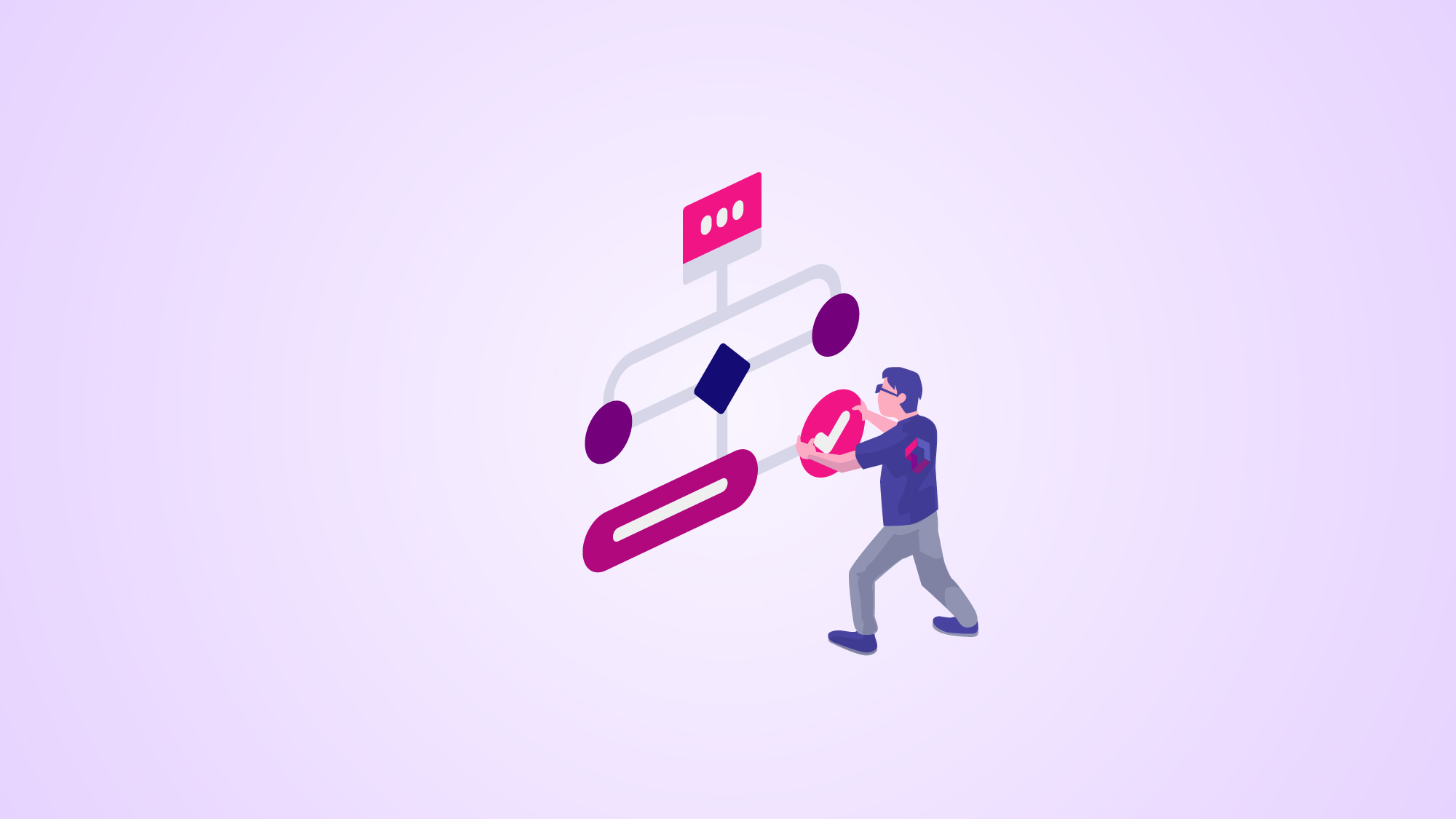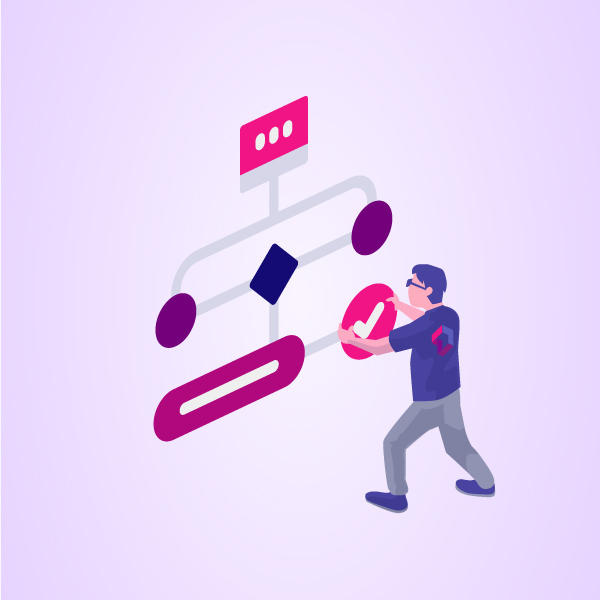
Standardizing processes (in this case, workflows) as your company grows is difficult, mainly when the support team assists the company in other projects and tasks and even supports several software products and instances, leaving them with no extra time to perform tweaks to upgrade systems. Establishing this process without interrupting teams' productivity it's a challenge. Therefore, this blog post will explain how to standardize workflows as an organization grows without becoming daunting.
It's one thing for the team to support 50 software tools and those who use them, but... What happens when the team supports more than 400 tools?
Keeping different workflows siloed isn't sustainable for anyone within the organization. As the organization grows, the ways of working that used to be reliable may not be anymore. Proper implementation and standardization of the flows will allow teams to collaborate seamlessly, supporting achieving each team's business objectives.
During this process, you'll find that even if some teams similarly use the tools, it's not sustainable. Imagine the following situation:
Each team has created a custom workflow in different instances, probably in specific geographical areas (in the case of organizations distributed worldwide).
Moreover, if you try to clean up the workflows within those instances, it will not be possible, as some components created for those workflows are used in others, so you risk disabling some tools and the teams' productivity.
In addition, if you're facing this situation in an environment with no established management, policies, or protocols, or best practices are lacking, you'll be facing a Herculean task to overcome. But don't worry, here's a way to do it:
To drive change, you need to find enterprise software tools offering enough flexibility to support each team's needs, guaranteeing its usability across the organization and adapting to organizational changes introduced as the organization grows. From our perspective, Atlassian's tools, hosted in the Data Center option, help to standardize processes. In this case, workflows:
What's Atlassian Cloud Enterprise and what to expect from it? >>
Several tools meet the organizational needs of one or another unequally. To understand if your tools meet these needs, it's essential to find tools that enable collaboration between each team across the organization.
This will help to identify if your products meet all of the organization's needs, as not having software tools that align with each team's needs will require you to continue to provide customized support. If the organization grows, it will become a significant barrier to breaking down silos and empowering different teams to collaborate agilely.
Having a stack of software tools that work in a coordinated way will create a positive end-to-end work experience. Take these examples of comparable workflows:
To align your workflows, you must understand the needs of different teams. They aren't familiar with all the capabilities of the software tools. You are.
To get this information, interview representatives from each team and ask the following questions:
The answers to these questions will lead to realizing that the workflows of each team, in general, will be quite similar. Take this example of comparable workflows:
For example, in the case of the Atlassian product stack, Developers typically use Jira Service Management to track their development work at the task level and can customize it to additionally support the task of performing documentation within the workflow. Let's explain each situation and how to align it:
The development workflow: Teresa is a developer assigned with a Jira Software issue to fix a bug. This issue includes all the relevant information she needs to start working (due date, operating system, and affected version); to move forward, she must send a request to the support team (or IT team) through Jira Service Management to get access to a virtual machine configured with the specific requirements listed in the issue.
Once having the virtual machine, Teresa will start working on bug fixes, storing all the code in Bitbucket, which is integrated with Jira Software (so Product Managers and other developers on the team have visibility). As the progress continues, Teresa will update the ticket with appropriate statuses until it's finally done and closed.
The documentation workflow: Don is a technical content writer creating the documentation for a new feature that Teresa has created and will launch. To start working on the project, he will be assigned another ticket from Jira Software with all the necessary information.
To start working, Don will write the content in Confluence, where he can reference different versions and even receive real-time corrections from colleagues until he finishes and closes the ticket.
As you can see, achieving interconnectivity between different software tools facilitates work, improves communication, and streamlines the team's work and production. In addition, having standard workflows between tools will help the support team support the organization's needs.
To implement workflows using Atlassian tools we recommend you follow the steps below:
Once the answers from the previous interview are compiled and analyzed, it's time for decision-making. It would be best to choose which products from the Atlassian stack are needed for each team.
It's important to start this process with the most important tools for your organization, as they will be used to the fullest extent as soon as possible. The subsequent steps will be:
Decide which workflows will be best suited for each team. For example, the workflow implemented for the documentation creation process may not be helpful across the organization, but perhaps, for developers will be.
Tailor the workflows to each team's needs, such as custom fields not supporting needs not predetermined in the workflow.
In this step, it would be necessary to decide what's more effective, and how the teams and organization will benefit the most: consolidating instances. If you will do so, it's necessary to standardize the configuration across all tools.
To make a quick decision, answering the following questions will help:
It's important to review, modify and communicate any changes to users' permissions and privileges on their systems.
If you choose to consolidate, first understand what options are available. For example, if you created an instance to support worldwide distributed teams, do you have a solution that ensures your teams don't experience performance issues? This will lead to looking for features supporting content delivery networks (CDNs).
It's time to find a way to clean up items that won't be used across instances to provide a better user experience for each team member and deliver the best instance performance possible.
Atlassian's stack offers features like the project and issue archiver or custom field optimizer. Those will help you accomplish instances performance optimization more efficiently.
By cleaning up unused data, it would be possible to continue creating workflows that make sense for the organization, creating best practices in user management, consolidating the company's software tools, considerably reducing the amount of data occupying the index, and saving infrastructure costs.
Learn how Fidelity Investments, a leading financial services company, achieved a significant boost in Jira performance and usability by reducing customizations by 99%, which is no small feat, given the company's 30,000 users and 5,000 Jira projects, and more than 2,000 workflows.
In the following video, you'll learn how the Fidelity team reduced workflow statuses to just 12, custom fields to less than 100, and consolidating to just one workflow, Fidelity was able to create a more efficient and effective Jira experience for its users with the use of our app.
Whether you're a Jira user or simply interested in software customization and optimization, this video is worth watching. It showcases how a large enterprise successfully streamlined its workflows and improved user satisfaction, providing valuable lessons for businesses of all sizes. Below, you can also download a use case that details exactly how to use Projectrak (Cloud or Data Center) for such a task:
If you're looking to homogenize and standardize processes and workflows within your company, don't hesitate to contact us, our experience is based on Atlassian tools and Agile, ITSM, and DevOps frameworks, which will lead us to help you evaluate your situation, advise you and accompany you in your transformation process; in case you need it. Keep reading!

If your company is growing and you are having difficulty standardizing the workflows of all the tools for all the teams, learn how Projectrak for Jira Data Center can help to go from more than 2,000 workflows to just one.
By downloading the following use case, you'll be able to deliver more value to your users and simplify the complexity of your Jira instance. Besides, you can learn from a great use case.
These Stories on Atlassian Data Center
No Comments Yet
Let us know what you think